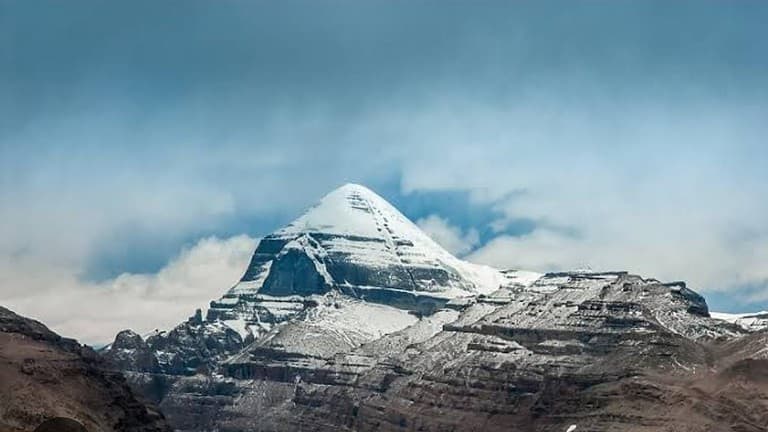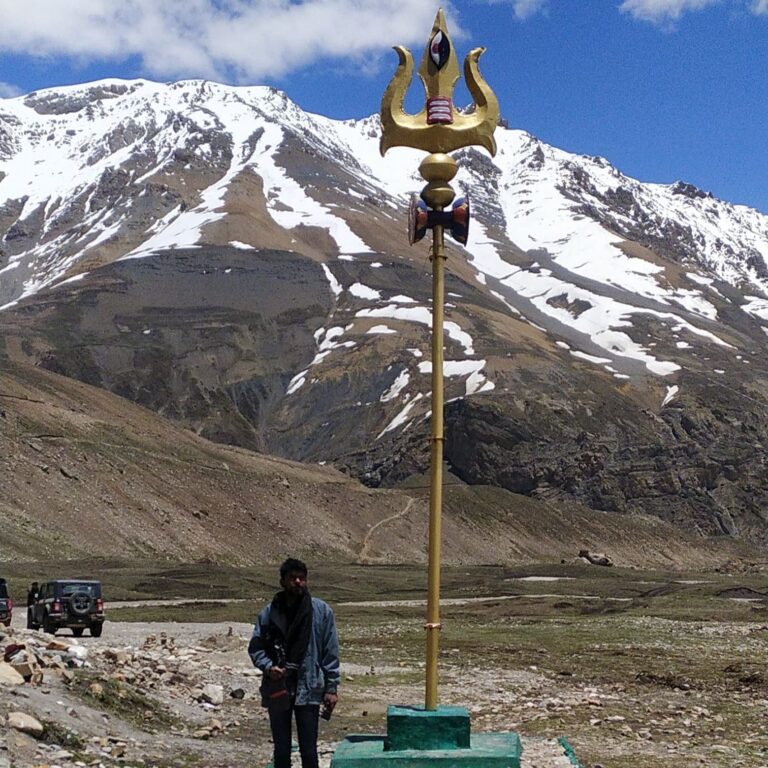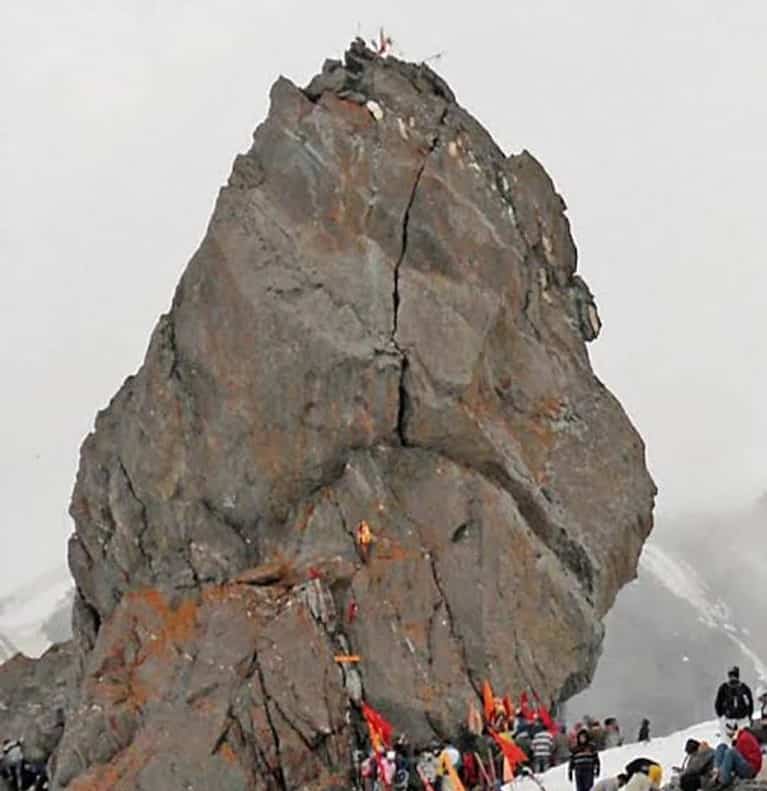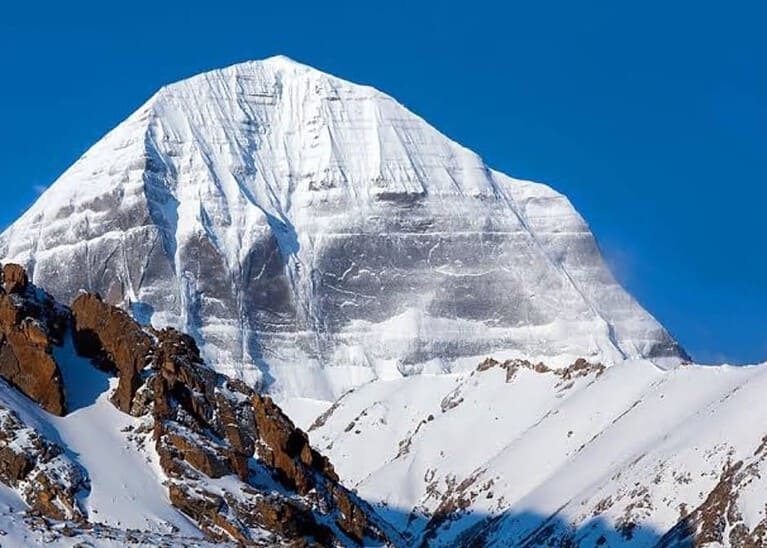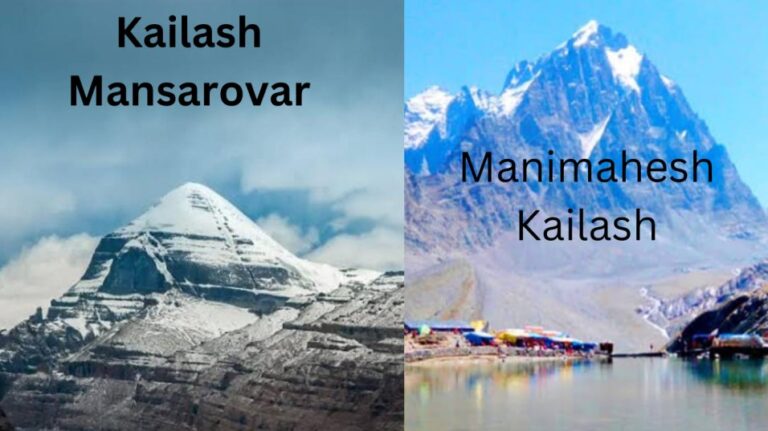Adi Kailash vs Kailash Mansarovar: Don’t Confuse These Two Sacred Giants!
🧭 Article Outline
Adi Kailash vs Kailash Mansarovar: Don’t Confuse These Two Sacred Giants!
Introduction
- Why This Comparison Matters
- The Mythological & Spiritual Weight of the Kailash Peaks
Geographic Location
- Where is Adi Kailash Located?
- Where is Kailash Mansarovar Located?
- Borders, Accessibility & Terrain Challenges
Significance in Hinduism, Buddhism & Jainism
Historical & Mythological Significance
- Adi Kailash – The ‘Chhota Kailash’ of Lord Shiva
- Kailash Mansarovar – The Cosmic Throne of Shiva
- Mentions in Hindu Scriptures and Puranas
Mythological Context
Cultural Differences on the Trails
Trekking & Accessibility & Routes
- Trek Route to Adi Kailash
- Yatra to Kailash Mansarovar
- Permit Requirements & Political Restrictions
Permits and Restrictions
- Adi Kailash
- Kailash Mansarovar
Altitude & Acclimatization
Natural Beauty Attractions & Surrounding Lakes
- Scenic Highlights of Adi Kailash Yatra
- Majestic Sights Around Kailash Mansarovar
- Lake Parvati vs Lake Mansarovar
Twin Lake Mystery: Mansarovar vs Rakshastal
Spiritual Experience & Energy Vibes
- Adi Kailash: A Silent Powerhouse
- Kailash Mansarovar: The Crown Chakra of Earth
Difficulty Level & Physical Demands
- Which Yatra is More Challenging?
- Acclimatization, Altitude, and Health Tips
Climbing Taboo: Why Mount Kailash Is Unclimbable
- Legend says:
- Modern Reality
The Time-Warp Phenomenon at Kailash
Cost Comparison
- Estimated Budget for Adi Kailash Yatra
- Estimated Budget for Kailash Mansarovar Yatra
- Why the Price Gap?
Political Scenario and Travel Restrictions
- India vs China Permissions
- Why Kailash Mansarovar Isn’t Always Open for Indians
Best Time to Visit
- Ideal Season for Adi Kailash
- Ideal Season for Kailash Mansarovar
Climate Conditions
Cultural Encounters
- Local Tribes and Pilgrims on Both Routes
- Tibetan Culture vs Kumaoni Traditions
Accommodation, Food & Facilities
- What to Expect During the Adi Kailash Yatra
- Staying at Mansarovar – Spartan Yet Sacred
Pilgrimage Sentiments
- The Emotional Journey to Adi Kailash
- The Spiritual Transformation at Mansarovar
Which one is right for you?
Which One Should You Choose?
- For Budget Travelers
- For Hardcore Pilgrims
- For First-Timers
Conclusion
FAQs
- Is Adi Kailash a substitute for Kailash Mansarovar?
- Can we see Mount Kailash from Adi Kailash?
- Which yatra is safer: Adi Kailash or Mansarovar?
- Do both yatra require government permission?
- Is it possible to complete both yatra in a single year?
- Can non-Hindus visit both places?
- Is Adi Kailash easier than Kailash Mansarovar?
- Can women travel solo to Adi Kailash?
- Are there any secret paths connecting both Kailashes?
🕉️ Adi Kailash vs Kailash Mansarovar: Don’t Confuse These Two Sacred Giants!
🔮 Introduction
Why This Comparison Matters
When you hear Kailash, it instantly evokes images of snow-covered peaks, divine energies, and the home of Lord Shiva. But here’s where many get confused—there’s not just one Kailash. Adi Kailash vs Kailash Mansarovar, they are two entirely different pilgrimage experiences, and if you’re planning a yatra, knowing the difference is essential.
Both peaks are sacred, both demand devotion, and both are not for the faint-hearted—but their routes, difficulty, costs, mythologies, and even countries differ. Let’s untangle this spiritual mystery, one point at a time.
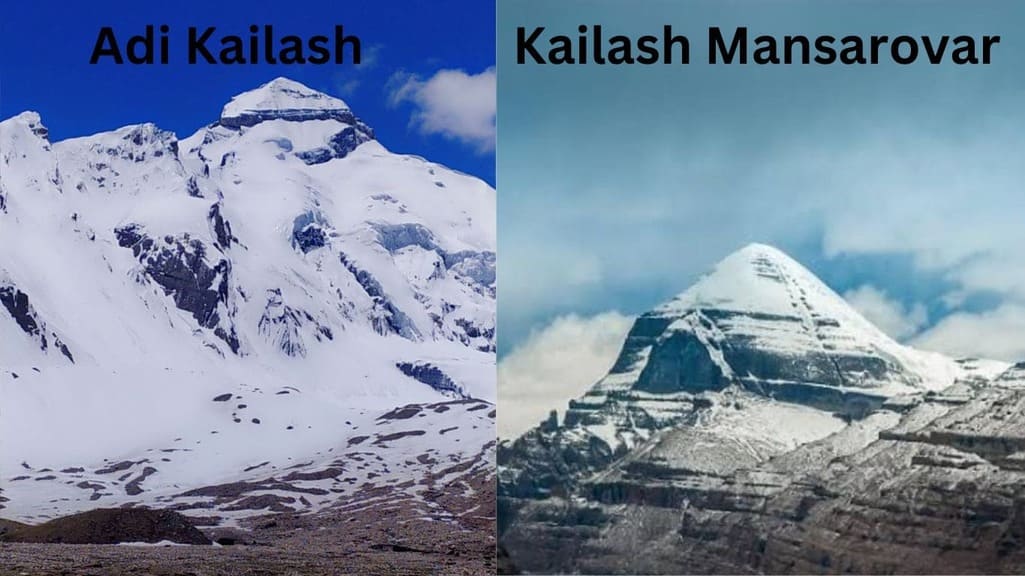
The Mythological & Spiritual Weight of the Kailash Peaks
Both Adi Kailash and Kailash Mansarovar are considered Abodes of Lord Shiva, but they serve different symbolic and mythological purposes in Hinduism and Buddhism. While Adi Kailash is known as the “Chhota Kailash,” Kailash Mansarovar is the “Main Kailash” or “Kailash Parvat.” But don’t be fooled by the word “chhota” — Adi Kailash is a powerful spiritual experience on its own.
When it comes to legendary spiritual journeys, few rival the magnetism of Adi Kailash and Kailash Mansarovar. They’re often confused—both are sacred peaks linked to Lord Shiva, both are isolated, and both promise life-altering experiences. But don’t let the common names fool you—these are two entirely different entities.
In this article, we go beyond surface comparisons. If you’re planning a pilgrimage or simply drawn to the mysteries of the Himalayas, this is your no-nonsense, no-fluff guide to understanding the true differences—and spiritual essence—of Adi Kailash vs Kailash Mansarovar.
🗺️ Geographic Location📍
Where is Adi Kailash Located?
Adi Kailash is located in Uttarakhand, India, in the Pithoragarh district, near the Indo-Tibet border. Nestled in the Kumaon Himalayas, this mountain stands tall at 6,191 meters. It is relatively accessible from within India, especially post-2022, with the construction of motorable roads up to Kutti and Jyolingkong.
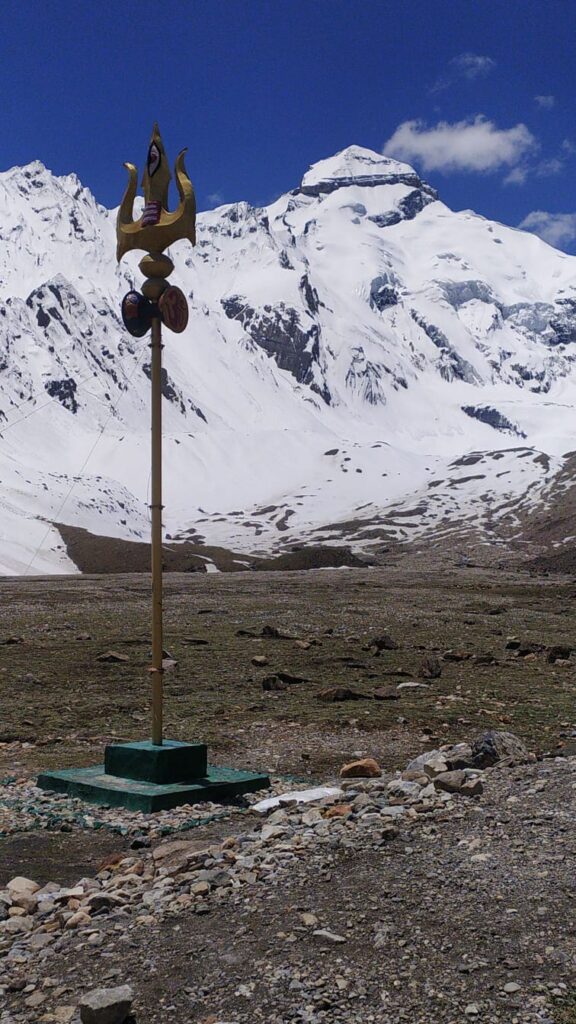
Where is Kailash Mansarovar Located?
Kailash Mansarovar lies in the Tibet Autonomous Region of China, at an elevation of 6,638 meters. The Mansarovar Lake sits at 4,590 meters. It’s considered the most sacred mountain in the world across Hinduism, Buddhism, Jainism, and Bon traditions.
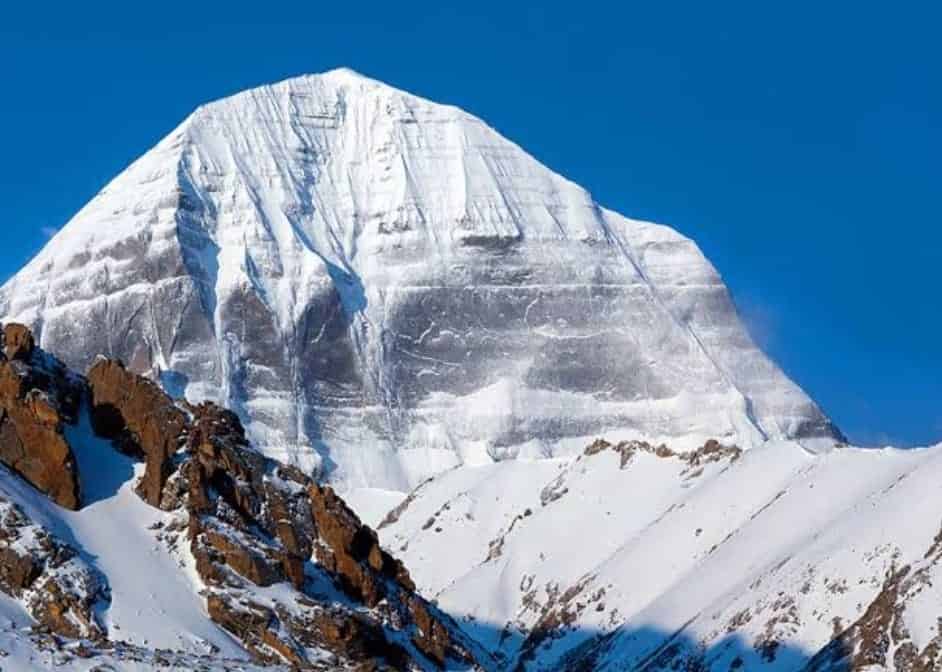
Borders, Accessibility & Terrain Challenges
Adi Kailash
- Adi Kailash is completely in Indian territory.
- Located in Pithoragarh district, Uttarakhand, India
- Part of the Kumaon Himalayan belt
- Altitude: 6,191 meters
- Region: Vyas Valley, near Om Parvat
Kailash Mansarovar
- Kailash Mansarovar involves crossing international borders (India–China or Nepal–China), subject to stringent permissions and limited slots.
- Located in the Tibet Autonomous Region, China
- Belongs to the Gangdise range of the Transhimalayas
- Altitude: 6,638 meters
- Lake Mansarovar is nearby at 4,590 meters
🛕 Significance in Hinduism, Buddhism & Jainism
| Faith | Mount Kailash | Adi Kailash |
| Hinduism | Abode of Shiva, center of the universe | Shiva’s earlier dwelling |
| Buddhism | Home of Demchok (Chakrasamvara) | Lesser known |
| Jainism | Nirvana of Rishabhdev | Not mentioned |
| Bon | Axis mundi, spiritual power center | Not directly associated |
📜 Historical & Mythological Significance
Adi Kailash – The ‘Chhota Kailash’ of Lord Shiva
Adi Kailash is believed to be the place where Lord Shiva resided before settling in Kailash Mansarovar. It is also associated with Parvati Lake and Gauri Kund, symbolizing the divine union of Shiva and Shakti.
Kailash Mansarovar – The Cosmic Throne of Shiva
Kailash Mansarovar is Mount Meru in Hindu cosmology. It is considered the axis of the world or the center of the universe, where gods reside. The circular trek (Parikrama) around Mount Kailash is equivalent to lifetimes of penance.
Mentions in Hindu Scriptures and Puranas
Both mountains are extensively mentioned in the Skanda Purana, Shiv Purana, and Vedas, but Kailash Mansarovar gets more prominence due to its cosmic relevance.
📖 Mythological Context
Both peaks are considered abodes of Lord Shiva, but their roles differ.
- Adi Kailash, also known as Chhota Kailash, is believed to be where Shiva resided before settling in Mount Kailash. According to lore preserved in Kumaoni traditions, Goddess Parvati’s journey stopped at Adi Kailash, unable to reach the greater Kailash.
- Mount Kailash is believed to be Mount Meru, the cosmic axis around which the universe revolves. It holds unmatched significance across Hinduism, Buddhism, Jainism, and Bon traditions.
🎭 Cultural Differences on the Trails
- Adi Kailash: Bhotiya, Kumaoni, Indian customs
- Kailash: Tibetan monks, Buddhist rituals, Bonpo traditions
Both offer unique windows into mountain cultures, rich in oral history and faith.
🥾 Trekking, Accessibility & Routes
Trek Route to Adi Kailash
- Start from Dharchula
- Drive to Gunji
- Trek or drive further to Kutti → Jyolingkong → Adi Kailash base
- Nearby: Om Parvat, Parvati Sarovar, Gauri Kund
Current status: Much of this route is motorable. The route is now motorable till Jyolingkong for most travelers. (post-2022 BRO work), making it accessible even to moderate trekkers.
Yatra to Kailash Mansarovar
There are 3 main Kailash Mansarovar Routes:
- Via Uttarakhand(India) Lipulekh Pass (India route) – Restricted and expensive.
- Via Nepal (Helicopter + Road) – Kathmandu → Simikot → Hilsa → Purang → Kailash Mansarovar.
- Via Lhasa (Tibet/China route) – For foreigners, most controlled and costly.
The Kailash Parikrama is the real test—a 3-day circumambulation over high passes like Dolma La (18,600 ft).
Permit Requirements & Political Restrictions
- Kailash Mansarovar involves a Chinese visa, Tibet travel permit, alien travel permit, etc. Political tensions often halt yatras.
🛂 Permits and Restrictions
Adi Kailash
- Adi Kailash requires permits from the SDM office in Dharchula.
- Requires Police verification
- Aadhaar and medical fitness mandatory
- A COVID-19 vaccination certificate might be asked for
- Two passport-sized photos
- 100% in Indian territory
Kailash Mansarovar
- Requires:
- Chinese visa
- Tibet Travel Permit
- Alien Travel Permit
- Restricted Area Permit
- Political tensions can suspend yatras
🌬️ Altitude & Acclimatization
- Adi Kailash Base Camp: ~15,500 ft
- Kailash Mansarovar Parikrama: Peaks at 18,600 ft
Tips:
- Acclimatize in Gunji (Adi Kailash) or Darchen (Kailash)
- Use Diamox, stay hydrated
- AMS risk is higher at Kailash Mansarovar
🏔️ Natural Beauty Attractions & Surroundings Lakes
Scenic Highlights of Adi Kailash Yatra
- Om Parvat (where natural snow forms ‘ॐ’)
- Kuti village (named after Mata Kunti)
- Gauri Kund and the surrounding alpine meadows and glaciers
- Parvati Kund: Reflects the peak beautifully
- Nearby: Pandav Fort, Kunti Parvat, Bheem Ki Kheti
Majestic Sights Around Kailash Mansarovar
- Mansarovar Lake (the sunrise reflection of Kailash is divine)
- Rakshastal – Saline, mysterious, and considered inauspicious
- Nearby: Dirapuk & Zuthulpuk monasteries, Yama Dwar, Ashtapada.
Lake Parvati vs Lake Mansarovar
- Parvati Lake is smaller but serene, nestled quietly near Adi Kailash.
- Mansarovar is gigantic and sacred, with ritual baths performed before Parikrama.
❓ Under-Answered Question: Why are Mansarovar and Rakshastal so different despite being adjacent?
Despite being just a strip of land apart, Mansarovar is freshwater, and Rakshastal is saline. Some geologists theorize about different underground sources or tectonic separation, but no conclusive explanation exists.
💧 Twin Lake Mystery: Mansarovar vs Rakshastal
Mansarovar: Serene, sacred, positive energy
Rakshastal: Stormy, ominous, salt water
These two symbolize good vs evil, light vs dark, Sattva vs Tamas—they’re mythologically loaded landscapes.
⚡ Spiritual Experience & Energy Vibes🔮
Adi Kailash: A Silent Powerhouse
People often describe Adi Kailash as spiritually grounding, with fewer crowds and more personal encounters with divinity.
Kailash Mansarovar: The Crown Chakra of Earth
Many believe Mount Kailash to be the crown chakra of Earth. Energy fields here can cause unexplained emotions, tears, and even visions.
Pilgrims report:
- Sudden emotional outbursts
- Visions in dreams
- A sense of timelessness and detachment
Kailash is often described as the Earth’s crown chakra, or center of the Earth, while Adi Kailash is a spiritual amplifier, especially for those sensitive to subtle energies.
⛰️ Difficulty Level & Physical Demands
Which Yatra is More Challenging?
- Adi Kailash has easier post-road connectivity.
- Kailash Mansarovar is physically demanding, especially the Dolma La Pass (18,600 ft).
Acclimatization, Altitude, and Health Tips
- Both require acclimatization.
- AMS (Acute Mountain Sickness) is common, especially near Mansarovar.
- Drink fluids, move slowly, and carry Diamox or oxygen cylinders.
🚫 Climbing Taboo: Why Mount Kailash is Unclimbable
Despite attempts by mountaineers, no one has ever summited Mount Kailash.
Legends Say:
- Milarepa, a Tibetan monk, was the only one to climb and warned others not to defile its sanctity.
Modern Reality:
- The Chinese government has banned climbing
- Even Reinhold Messner, a legendary climber, refused out of respect
⏳ The Time-Warp Phenomenon at Kailash
Many pilgrims claim that time behaves differently near Kailash. Some common stories:
- Nails and hair grow unusually fast
- Watches behave erratically
- People feel days pass like hours
There’s no scientific confirmation—yet the tales continue. It’s one of the great unsolved mysteries of the region.
💸 Cost Comparison
Estimated Budget for Adi Kailash Yatra
- ₹45,000 to ₹70,000 per person
- Includes permits, guide, food, transport, and stay
Estimated Budget for Kailash Mansarovar Yatra
- ₹1.8 lakh to ₹2.5 lakh per person (via Nepal)
- Over ₹3 lakh via Indian route
Why the Price Gap?
- Kailash Mansarovar involves multiple international permits, airfare, Chinese government fees, and guides.
- Adi Kailash is within India, and more budget-friendly.
Pro Tip: Adi Kailash is best for first-timers or budget-conscious pilgrims.
🛂 Political Scenario and Travel Restrictions
India vs China Permissions
- Adi Kailash – only Indian permission required.
- Mansarovar – Chinese policies can delay or cancel yatras.
Why Kailash Mansarovar Isn’t Always Open for Indians
Due to India–China tensions, yatras are frequently paused. Also, the Indian route is limited to 18 batches per year.
🌦️ Best Time to Visit
Ideal Season for Adi Kailash
- June to September – Pleasant climate, open routes
- Avoid monsoons if the roads are freshly carved
Ideal Season for Kailash Mansarovar
- Mid-May to mid-September
- Snow clears up, and high passes are manageable
🌦️ Climatic Conditions
| Location | Best Months | Weather Risks |
| Adi Kailash | June–Sept | Landslides, rain |
| Kailash Mansarovar | May–Sept | Snow, cold desert winds |
Always travel with layered clothing, waterproof gear, and backup supplies.
🌍 Cultural Encounters
Local Tribes and Pilgrims on Both Routes
- Adi Kailash – Bhotiya tribes, Kumaoni shepherds
- Mansarovar – Tibetan monks, pilgrims from Nepal, Bhutan, Sri Lanka
Tibetan Culture vs Kumaoni Traditions
While Adi Kailash reflects Indian Himalayan heritage, Kailash Mansarovar immerses you in Buddhist and Tibetan traditions.
🏕️ Accommodation, Food & Facilities
What to Expect During the Adi Kailash Yatra
- Basic guesthouses, homestays in villages like Gunji, Nabhi
- Simple veg food, dal-rice-roti, Maggi, chai, and biscuits
- No luxury—just warmth and simplicity
Staying at Mansarovar – Spartan Yet Sacred
- Tibetan-style lodges or tents, and mud houses
- Dal, Tibetan noodles, dry fruits — carry your own food supplements
- Meals: Simple Tibetan food or Indian veg
- Carry snacks, ORS, and dry fruits
🙏 Pilgrimage Sentiments
The Emotional Journey to Adi Kailash
It’s more personal, raw, and quiet. Many cry not because of altitude, but the emotional wave that Adi Kailash brings.
The Spiritual Transformation at Mansarovar
At Mansarovar, ego melts. Many report visions, spiritual dreams, and a sense of complete surrender.
🤔 Which One is Right for You?
| Category | Pick This Yatra |
| Budget Traveler | Adi Kailash |
| Hardcore Pilgrim | Kailash Mansarovar |
| Physically Fit | Both |
| First-Time Yatri | Adi Kailash |
| Wanting Isolation | Adi Kailash (less crowded) |
| Seeking Transformation | Kailash Mansarovar |
❓ Which One Should You Choose?
For Budget Travelers
Adi Kailash wins hands down.
For Hardcore Pilgrims
Kailash Mansarovar is the ultimate life goal.
For First-Timers
Try Adi Kailash to test your endurance and devotion.
🧘 Conclusion
So, Adi Kailash vs Kailash Mansarovar—is it a competition? Not really. They are spiritual siblings, each guiding seekers in their own way. If Kailash Mansarovar is the cosmic throne, then Adi Kailash is the meditative cave beneath. Begin where you feel called. And maybe, just maybe, you’ll walk away not just with photos, but with your soul a little lighter.
While both Adi Kailash and Kailash Mansarovar are celestial abodes of Lord Shiva, they serve different spiritual purposes. One is accessible, affordable, and rooted in Indian soil. The other is remote, divine, and interwoven with global mysticism. You don’t have to pick one over the other—just pick where your soul feels called first.
🙋♂️ FAQs 🙋
1. Is Adi Kailash a substitute for Kailash Mansarovar?
No, it complements it. Adi Kailash is spiritually powerful, but Kailash Mansarovar holds universal religious reverence.
2. Can we see Mount Kailash from Adi Kailash?
No, they are separate peaks in different regions—one in India, the other in Tibet.
3. Which yatra is safer: Adi Kailash or Mansarovar?
Adi Kailash is safer, with Indian infrastructure and permits. Mansarovar involves international permissions and risks.
4. Do both yatras require government permission?
Yes, but Adi Kailash requires an Indian ID and an inner line permit, while Mansarovar needs a Chinese visa, Tibetan permits, etc.
5. Is it possible to complete both yatra in a single year?
Technically, yes, but logistically challenging and expensive. Choose based on your physical and financial preparedness.
6. Can non-Hindus visit both places?
Yes, both places are open to seekers of all faiths.
7. Is Adi Kailash easier than Kailash Mansarovar?
Yes, due to domestic access, cost, and road connectivity.
8. Can women travel solo to Adi Kailash?
Yes, but it’s best to join a group or go through an authorized operator.
9. Are there any secret paths connecting both Kailashes?
No, there are no secret paths that connect these two Spiritual Giants, at least no paths are known to humans so far. There is a path via OM Parvat that the Indian Government is building to connect to Mount Kailash directly, but no path connects both Kailashes right now.

